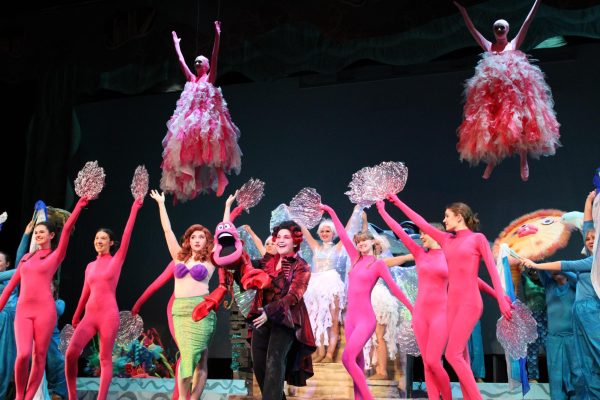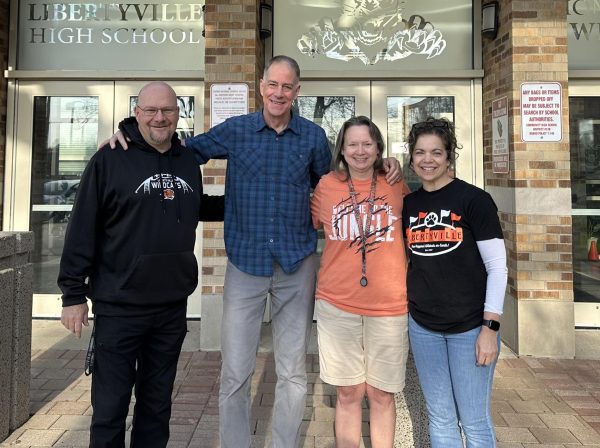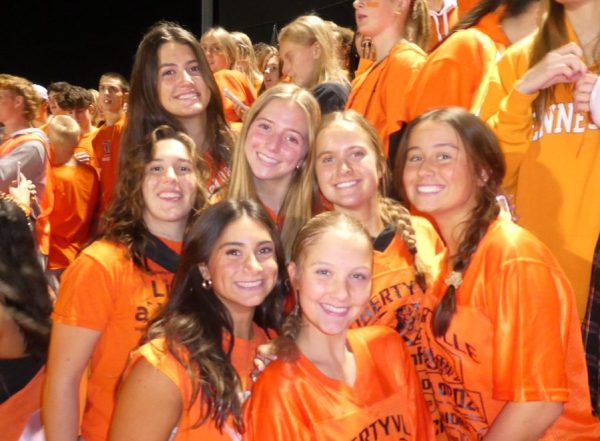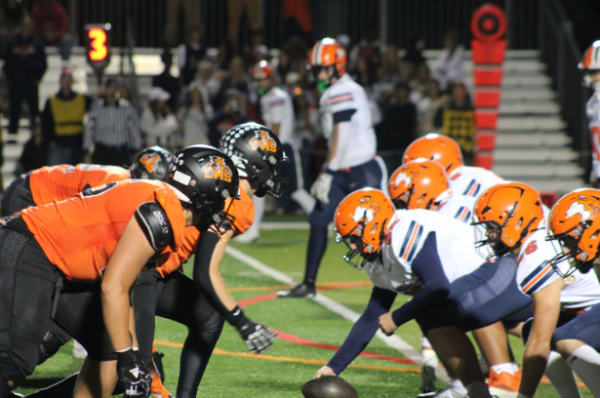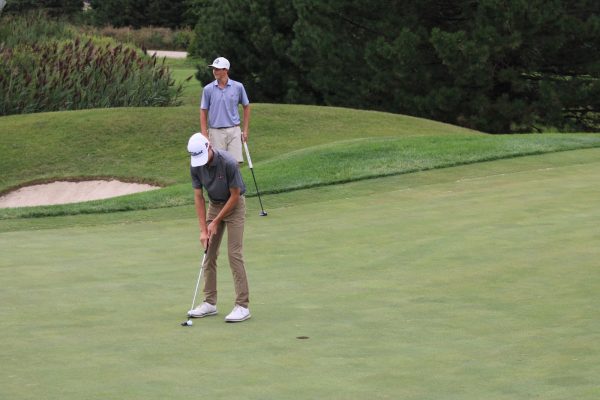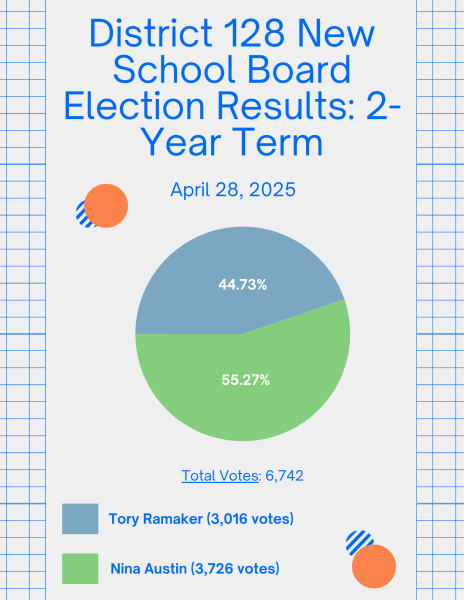TO SAY OR NOT TO SAY: The Pledge of Allegiance
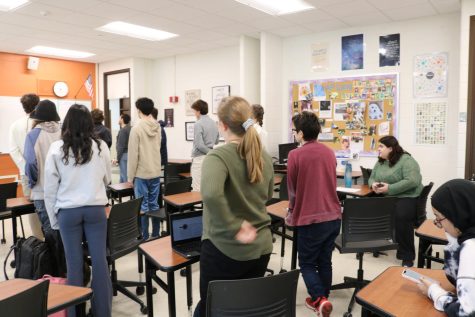
The second period bell rings. The speakers crackle as the morning announcements start: “Good morning Wildcats. Please pause for a moment of silence.” A beat. “Please stand for the Pledge.” Chairs scrape as students stand up, put their hands over their heart and prepare to recite the Pledge of Allegiance. But a couple of students remain seated. Or the class stands, but nobody says the Pledge. Scenes like these are becoming more common at LHS.
In fact, out of 58 responses in a survey sent out to teachers, 60 percent said the majority of their class stands without speaking, 19 percent said the majority of their class does not stand at all, and only 21 percent said the majority of their class both stands and recites the Pledge.
Additionally, on a scale of one to five (one being not attentive, five being extremely attentive) , when thinking back 5-10 years, 46 percent of teachers reported their class to be extremely attentive, as opposed to now, where only seven percent of teachers reported their class to be extremely attentive.
The Illinois Statutes Chapter 105 says, “The Pledge of Allegiance shall be recited each school day by pupils in elementary and secondary educational institutions supported or maintained in whole or in part by public funds.”
So why has there been a change in behavior during the Pledge in LHS classrooms?
THE RIGHT TO FREE SPEECH
Constitutionally, students are protected by the first amendment when it comes to making the choice of whether or not to stand and recite the Pledge of Allegiance.
This issue reached the Supreme Court in 1943 through the case of West Virginia State Board of Education v. Barnette. According to Constitutioncenter.org, the Court held that the government could not compel citizens to express beliefs without violating freedom of speech, and regardless of whether the objections to saluting the flag were religiously based or not, this freedom had to be respected.
Representing the 6-3 majority opinion, Justice Robert H. Jackson said, “no official, high or petty, can prescribe what shall be orthodoxy in politics, nationalism, religion, or other matters of opinion or force citizens to confess by word.”
Although never formally told this as an educator, social studies teacher Mr. Casey Aubin, who has observed a “changing dynamic” regarding the Pledge of Allegiance in his classroom in recent years, has always understood it to be a “freedom of speech issue.”
“I think the perception is that it’s the classroom teacher’s role to say, ‘Hey, it’s time for the Pledge,’” Mr. Aubin said. “But the reality is, it is not our position to say that, because it is a matter of freedom of speech.”
Five or six years ago, Mr. Aubin thought that there was more of a cultural and societal norm that everyone would be standing, saying and looking at the flag. He has observed a change in his classroom since then.
“I do think that over the last couple of years, there may have not been large numbers, but more examples where kids either are not standing for the Pledge or maybe even not giving it any attention,” Mr. Aubin said.
SPEAK, STAND, OR SIT?
Senior Michael Scarpelli, who has family members that served in the military throughout major conflicts such as the war in Afghanistan, chooses to stand, put his hand over his heart and recite the Pledge. In his class, everybody usually stands, yet he is one of two people who also audibly recites it.
Scarpelli proudly recites the Pledge not only to honor those who have served the United States, but also to show his loyalty to the country and the flag.
“There is a sense of pride in being an American, right?” Scarpelli said. “Because, sure, there are flaws. Everybody knows there are flaws in every country. But we overcame so much. It’s pretty awesome to live here.”
Junior Louie Perry also stands up and says the pledge every day. However, he is motivated less by patriotism, and more out of respect and remembrance of those who fought for the flag. His grandfather fought in the Korean War, and Perry likes to honor his actions and financial sacrifice.
“People have fought for the flag and what it represents,” Perry said. “I want to remember their legacy and the reasons they fought for us.”
Two decades ago, Mr. Aubin observed similar motivations regarding respecting service members in his classroom, especially during the aftermath of 9/11.
“I think there was a real increase in [reciting the pledge],” Mr. Aubin said, since many people wanted to show support for the troops even if they didn’t support the war.
Freshman Ava Baditor, on the other hand, sits in her class quietly during the Pledge. This started in eighth grade, mostly due to feelings of awkwardness since the pledge doesn’t reflect her beliefs.
“I don’t really believe in a god in general, so I don’t really feel like it’s necessary for me to stand up and do it,” Baditor said. “I think at this point in time, most people just do it out of habit.”
Junior Aditi Nair also sits. Seeing a few other female classmates of color choose to remain seated during the Pledge solidified Nair’s decision to sit this year.
If she wasn’t among those peers, she “would probably feel really afraid or uncomfortable [to be the only one sitting],” Nair said.
Nair chooses to sit because it feels strange reciting the Pledge when, in her opinion, the words in the Pledge don’t reflect reality in the U.S.
“I guess not from my personal background, but in solidarity and for other people in a way, because what the pledge actually says – ‘liberty and justice for all’- is not true at all,” Nair said.
As reflected in the survey, many students simply choose to stand, even though they are silent. Senior Joudy Sabry is among those who stands, puts their hand on heart, but remains quiet during the Pledge. Her classmates also do the same.
“It doesn’t have to do with my beliefs,” Sabry said. “I don’t say it because it just feels awkward… I’m not gonna say it out loud, but that doesn’t mean that I don’t respect it.”
After Sabry moved to the Libertyville area from Saudi Arabia in eighth grade, she didn’t know what the Pledge was. However, she memorized it, stood up, and started saying it then.
“I was just conforming because everyone else was saying it,” Sabry said. “I don’t think it’s a big issue [though] because at the end of the day, you’re not forced to do anything.”
In sophomore Jake Potter’s classroom, according to him, some sit down, and the majority stand up, but “nobody actually says the Pledge of Allegiance.’ The exception is his teacher. Potter, and many of his classmates, have not recited the Pledge since the beginning of the year, and that solidified over the school year. Potter primarily views it as part of his morning routine.
“I feel like it’s just something that happens every day,” Potter said. “It’s got to be done.”
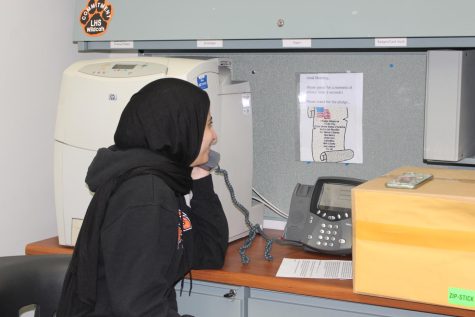
A TEACHER’S PERSPECTIVE
Just as Potter’s teacher singularly recites the Pledge, English teacher Mr. Brain Twadell is the only one in the room reciting the Pledge during his second hour.
“I don’t think any of my students are actually saying it or if they are, they’re very quiet and I can’t hear them,” Mr. Twadell said.
While his entire class does stand, Twadell sees this as a dramatic shift from past years.
“I would say this is the first time in 25 years at LHS that I’ve observed that,” Mr. Twadell said. “I would say in prior years, it seemed like most students were actually saying it, so this is definitely a different feeling this year.”
Both of Twadell’s grandfathers served in the military during World War II, so Twadell thinks about the way they served when saying the pledge. Additionally, Mr. Twadell is not only “used to doing it” having been a teacher for so long, but also views his role as a teacher to “set a good example” for his students.
On the other hand, PAWS teacher Mrs. Laura Akers stands with her class during the Pledge but chooses not to recite the pledge.
Mrs. Akers grew up reciting the Pledge as a student in Libertyville, and this has continued into her adult life as a teacher. When she started as a teacher at LHS 20 years ago, the classroom during the Pledge looked vastly different: all of her students stood up and said it. She also felt “a definite push” on teachers to encourage students to participate.
However, in the past decade, Akers saw a slow shift where “people seemed less interested in doing it,” which was exacerbated by returning from e-learning due to COVID-19.
“It’s lost its meaning because it’s something we just do routinely,” Mrs. Akers said. “I don’t even think about it anymore. I’ve been doing it my entire life. I started school at five…I’ve been doing it every single year every single day since then.”
Mrs. Akers views the flag as a reminder of her civic duties, to the U.S. ‘s past and being involved as a citizen. However, she says, “it doesn’t carry the same weight that it did when it was initially brought into schools and people don’t care as much about it anymore.”
FOR THE FUTURE
Whether the decision to stand or sit lies simply in habit, or there is a deeper motivation for students, the ultimate choice lies in each individual. This freedom of choice reflects a core U.S. value.
“It’s really this kind of unique discussion of freedom of speech rights,” Mr. Aubin said. “Should you honor [the flag] and stand for the pledge? Or in [another] way, is the decision to not look at it and not stand actually honoring the flag that gives you the right to do that?”



